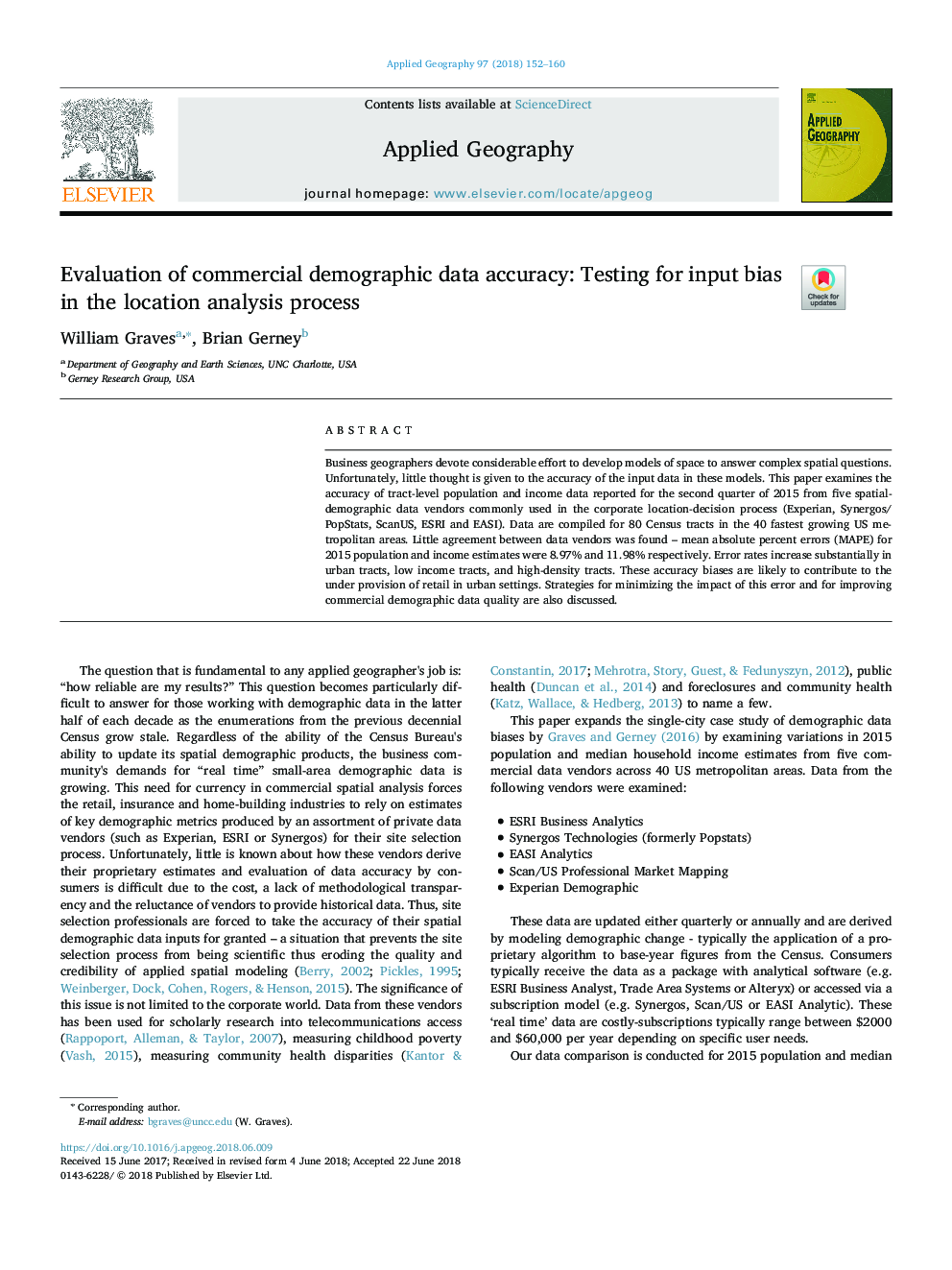| Article ID | Journal | Published Year | Pages | File Type |
|---|---|---|---|---|
| 6538234 | Applied Geography | 2018 | 9 Pages |
Abstract
Business geographers devote considerable effort to develop models of space to answer complex spatial questions. Unfortunately, little thought is given to the accuracy of the input data in these models. This paper examines the accuracy of tract-level population and income data reported for the second quarter of 2015 from five spatial-demographic data vendors commonly used in the corporate location-decision process (Experian, Synergos/PopStats, ScanUS, ESRI and EASI). Data are compiled for 80 Census tracts in the 40 fastest growing US metropolitan areas. Little agreement between data vendors was found - mean absolute percent errors (MAPE) for 2015 population and income estimates were 8.97% and 11.98% respectively. Error rates increase substantially in urban tracts, low income tracts, and high-density tracts. These accuracy biases are likely to contribute to the under provision of retail in urban settings. Strategies for minimizing the impact of this error and for improving commercial demographic data quality are also discussed.
Related Topics
Life Sciences
Agricultural and Biological Sciences
Forestry
Authors
William Graves, Brian Gerney,
